Hemp Harvest Season by State: Regional Growing Calendars
The hemp harvest time by state varies dramatically across the United States, creating unique challenges and opportunities for cultivators in different regions. Understanding your local climate's impact on hemp maturation isn't just about timing—it's critical for maintaining compliance with state hemp THCa regulations and maximizing the quality of your crop.
Regional climate variations affect everything from planting schedules to the final cannabinoid profile of your hemp flowers. Temperature fluctuations, humidity levels, UV exposure, and seasonal weather patterns all influence how quickly hemp matures and how THCa levels develop in your plants. For growers targeting premium THCa hemp production, these regional differences can mean the difference between a compliant, high-quality harvest and costly crop destruction.
The United States encompasses diverse hemp-growing regions, from the cool, short seasons of the northern tier to the extended growing periods of the Deep South, and from the humid Southeast to the arid Southwest. Each region presents distinct advantages and challenges for hemp cultivation, particularly when it comes to managing THCa limits by state hemp regulations. Whether you're cultivating in Maine's rocky soil or California's sun-drenched valleys, understanding your region's growing calendar is essential for success.
This comprehensive guide breaks down hemp harvest time by state, exploring how regional climates affect THCa development, what testing requirements you'll face, and how to optimize your harvest timing for both compliance and quality. For those seeking premium THCa hemp products that have been expertly cultivated and harvested at peak potency, explore the latest THCa releases from experienced cultivators who understand these regional nuances.

Understanding Hemp Growing Zones and Climate Factors
USDA Hardiness Zones and Hemp Cultivation
Hemp cultivation success begins with understanding your USDA hardiness zone, which indicates the average annual minimum winter temperature in your area. Hemp thrives in zones 3-10, but the specific zone dramatically affects your planting and harvest windows. Northern zones (3-5) experience shorter growing seasons with frost threats extending into late spring and returning in early fall, while southern zones (8-10) offer extended seasons that can support multiple harvests or very late-season varieties.
Frost dates are particularly crucial for outdoor hemp cultivation. The last spring frost date determines the earliest safe planting time for outdoor crops, while the first fall frost date sets the absolute deadline for harvest. Hemp is not frost-tolerant once flowering begins, and exposure to freezing temperatures can cause rapid THCa degradation climate effects that compromise both quality and compliance.
Growing Degree Days (GDD) and Hemp Maturation
Growing Degree Days provide a more accurate predictor of hemp development than simple calendar dates. Hemp typically requires 2,500-3,500 GDD from planting to harvest, depending on the variety. GDD calculations factor in daily high and low temperatures, giving growers a scientifically-based timeline for maturation.
In northern states with cooler temperatures, GDD accumulation is slower, necessitating earlier planting of faster-maturing varieties. Southern states accumulate GDD rapidly, allowing for later planting dates or longer-season varieties that can develop more complex cannabinoid and terpene profiles. Understanding GDD helps predict when regional THCa testing requirements become necessary as plants approach maturity.
Photoperiod Sensitivity Across Regions
Hemp is photoperiod-sensitive, triggering flowering when day length decreases to approximately 12-14 hours depending on variety. This creates distinct regional patterns:
- Northern latitudes (above 40°N) experience dramatic photoperiod shifts, with flowering triggered naturally in late July to early August
- Middle latitudes (35-40°N) see flowering initiation in mid-to-late August
- Southern latitudes (below 35°N) may not trigger flowering until September in some varieties
This photoperiod variation affects climate effects on THCa by determining how much of the growing season occurs during peak heat (which can stress plants and affect cannabinoid production) versus cooler fall weather (which can preserve THCa and enhance quality).
Northern States: Short Seasons and Cold-Hardy Cultivation
Northeast Region (Maine, Vermont, New Hampshire, New York, Pennsylvania)
The Northeast represents some of the most challenging yet rewarding hemp-growing territory in the United States. Hemp harvest time by state in this region is compressed into a narrow window, requiring precise planning and execution.
Planting Timeline: Late May through early June, after the last frost date (typically May 15-30 depending on location and elevation)
Harvest Timeline: Late September through early October, before the first hard frost (usually October 1-20)
The compressed growing season means northeastern growers must select varieties that can complete their lifecycle in 100-120 days. The advantage? Cold weather THCa hemp cultivation in the Northeast often produces exceptional quality. Cooler fall temperatures slow THCa degradation and enhance terpene preservation, resulting in aromatic, potent flowers.
THCa Considerations in Northeast Climates:
The Northeast's moderate summer temperatures and cool falls create favorable conditions for maintaining stable THCa levels. Unlike southern regions where extreme heat can cause rapid THCa conversion to Delta-9 THC, northeastern growers often find their regional hemp THCa compliance easier to maintain. However, the race against frost dates requires strategic planning:
- Pre-harvest testing should begin 2-3 weeks before anticipated harvest
- Rapid harvest execution is essential when frost threatens
- State hemp THCa regulations in Vermont and Maine allow 1% total THC, providing slightly more flexibility than the federal 0.3% limit
For those appreciating the quality that Northeast growing conditions produce, the premium THCa releases showcase similar cold-climate cultivation excellence.
Recommended Varieties: Early-finishing cultivars like Cherry Wine, Wife, and BaOx perform well, completing maturation before frost while maintaining compliant THCa levels.
Midwest Region (Minnesota, Wisconsin, Michigan, Illinois, Indiana, Ohio)
The Midwest's continental climate brings hot summers and cold winters, with a moderate growing season that suits hemp cultivation well. Hemp harvest time by state varies slightly across this large region, with northern tier states (Minnesota, Wisconsin, Michigan) experiencing shorter seasons than southern Midwest states (Illinois, Indiana, Ohio).
Planting Timeline: Mid-May through early June
Harvest Timeline: Late September through mid-October
Short Season Strategies:
Midwest growers employ several strategies to maximize their growing window:
- Greenhouse starts: Beginning plants indoors or in greenhouses 2-4 weeks before outdoor planting extends the effective season
- Raised beds and black plastic mulch: Warming the soil accelerates early growth
- Row covers: Protecting young plants from late spring cold snaps prevents setbacks
THCa Stability in Variable Weather:
The Midwest's weather variability presents unique challenges for regional THCa testing requirements. Late summer heat waves can stress plants and accelerate THCa production, while early cold snaps in September can suddenly halt cannabinoid development. This variability means:
- Weekly monitoring of cannabinoid levels during the final 3-4 weeks before harvest
- Multiple testing dates may be necessary to catch the optimal harvest window
- State hemp THCa regulations typically require testing within 15-30 days of harvest, but Midwest growers benefit from testing earlier to track trends
The Midwest's rich agricultural soils and adequate rainfall create robust plants with strong cannabinoid production, though growers must carefully monitor heat stress THCa levels during July and August hot spells.
Mountain West Region (Montana, Wyoming, Colorado, Idaho)
The Mountain West presents unique hemp cultivation challenges and opportunities. High elevations, intense UV radiation, wide diurnal temperature swings, and variable frost patterns define this region's growing conditions.
Planting Timeline: Late May through June (elevation-dependent)
Harvest Timeline: September through early October
High Altitude Considerations:
Elevation dramatically affects hemp cultivation in mountain states. Lower valleys (below 5,000 feet) offer longer growing seasons and warmer temperatures, while higher elevations (6,000-7,000+ feet) present frost challenges and shorter seasons. However, high-altitude cultivation offers distinct advantages:
- Increased UV exposure stimulates cannabinoid and terpene production
- Cooler nighttime temperatures preserve THCa and enhance quality
- Lower pest pressure reduces crop damage and pesticide needs
- Dramatic diurnal temperature swings stress plants into higher cannabinoid production
THCa and UV Exposure:
Colorado's intense sunlight and high UV levels create exceptional conditions for THCa limits by state hemp compliance management. The state's combination of abundant sunshine and cool fall temperatures allows THCa levels to develop robustly without the rapid degradation seen in hot, humid climates. Mountain West growers often find their climate effects on THCa work in their favor, producing high-quality, compliant hemp with rich cannabinoid profiles.
State-Specific Considerations:
- Colorado: Well-established program with 0.3% total THC limit; requires pre-harvest testing by approved labs
- Montana: Developing program with strict oversight; producers must work closely with state regulators
- Wyoming: Limited hemp program with restrictive regulations
- Idaho: No legal hemp program currently; THC restrictions extremely stringent
For hemp enthusiasts seeking the quality that Mountain West conditions produce, explore high-elevation cultivated THCa hemp that captures these unique terroir characteristics.
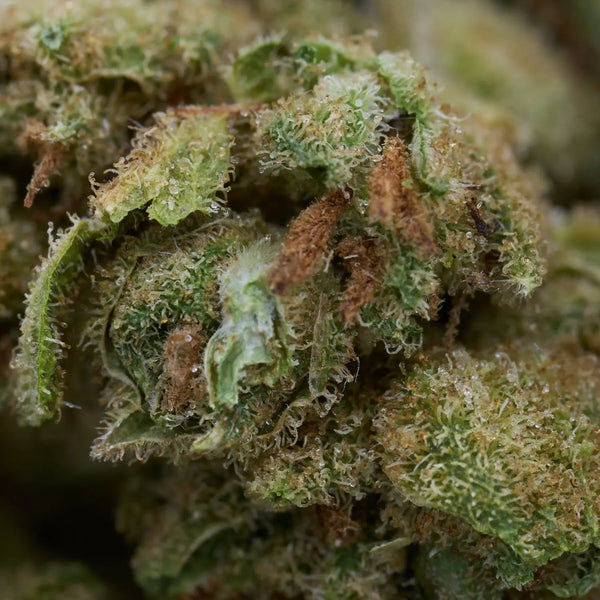
Southern States: Extended Seasons and Heat Management
Southeast Region (North Carolina, South Carolina, Georgia, Florida, Alabama, Mississippi, Louisiana)
The Southeast's long growing season, abundant rainfall, and warm temperatures create ideal conditions for hemp—with the caveat that heat and humidity management become critical factors for quality and compliance.
Planting Timeline: April through May
Harvest Timeline: October through November
Humidity and THCa Degradation:
The Southeast's high humidity levels present the most significant challenge for maintaining THCa limits by state hemp compliance. Warm, humid conditions accelerate several processes that affect final product quality:
- Mold and mildew pressure: High humidity increases pathogen risks, potentially forcing early harvest
- Accelerated plant metabolism: Warm nighttime temperatures speed THCa conversion to Delta-9 THC
- Terpene volatilization: Heat causes aromatic compounds to evaporate, reducing quality
Regional THCa testing requirements in southeastern states often mandate more frequent testing intervals precisely because environmental conditions can cause rapid cannabinoid changes. North Carolina, a leader in eastern hemp production, requires testing within 15 days of harvest and has robust laboratory infrastructure to support growers.
Multiple Harvest Potential:
The Southeast's extended frost-free period (200-300+ days in many areas) allows for creative cultivation strategies:
- Succession planting: Staggering planting dates spreads harvest timing and labor demands
- Two-crop systems: In Florida and coastal areas, early-maturing varieties harvested in September allow replanting for a late fall/winter crop
- Photoperiod manipulation: Light deprivation techniques can trigger earlier flowering, optimizing harvest timing for weather and market conditions
Heat Stress Management:
Heat stress THCa levels become a critical concern when temperatures consistently exceed 90°F (32°C), which is common throughout the Southeast from June through September. Heat stress can:
- Increase THCa production as plants respond to environmental stress
- Trigger premature flowering in some varieties
- Reduce overall plant health affecting final yields
Southeastern growers manage heat stress through:
- Variety selection: Heat-tolerant genetics adapted to warm climates
- Irrigation management: Consistent moisture reduces heat stress
- Shade structures: In extreme heat areas, 20-30% shade cloth protects plants
- Timing strategies: Planting dates that position peak flowering during cooler October weather
The THCa hemp varieties bred for warm climates demonstrate how proper genetics selection optimizes cannabinoid production while managing environmental challenges.
South Central Region (Texas, Oklahoma, Arkansas, Tennessee, Kentucky)
The South Central region bridges the humid Southeast and drier Southwest, offering diverse microclimates and excellent hemp-growing potential. Kentucky and Tennessee have emerged as leaders in American hemp production, leveraging agricultural expertise and favorable regulations.
Planting Timeline: April through May
Harvest Timeline: October through early November
Long Season Advantages:
The 180-200+ day growing season in most South Central states allows growers to cultivate longer-maturing varieties that develop more complex cannabinoid and terpene profiles. This extended timeline provides:
- Flexibility in harvest timing: Weather delays or market conditions can be accommodated
- Enhanced flower development: Longer maturation periods produce denser, more resinous flowers
- Strategic compliance timing: The ability to delay harvest by 1-2 weeks if THCa levels test too high
THCa Testing Frequency in Heat:
South Central states experience significant summer heat, with temperatures regularly exceeding 95°F (35°C) from July through September. This heat affects climate effects on THCa by accelerating plant metabolism during the critical pre-harvest period. Growers in this region should:
- Begin testing 4-5 weeks pre-harvest: Early baseline testing identifies rapid THCa accumulation
- Test weekly during the final month: Heat-driven metabolic changes require close monitoring
- Consider heat-adjusted harvest timing: Planning harvest for October rather than September allows plants to mature during cooler weather
State-Specific Regulatory Environments:
- Kentucky: Pioneering hemp state with comprehensive regulations; 0.3% total THC limit with 15-day testing window
- Tennessee: Well-developed program with strong agricultural support infrastructure
- Arkansas: Growing program with evolving regulations
- Oklahoma: Flexible regulations but limited processing infrastructure
- Texas: Large state with varying microclimates; regulations continue to develop
Southwest Region (Arizona, New Mexico, Nevada)
The Southwest's arid climate, intense sunlight, and extreme temperatures create unique hemp cultivation conditions. While water availability is the primary limiting factor, successful growers produce exceptional quality hemp adapted to desert conditions.
Planting Timeline: March through April
Harvest Timeline: September through October
Irrigation Requirements:
Southwest hemp cultivation is irrigation-dependent. Desert regions receive 5-15 inches of annual rainfall, far below hemp's 20-30 inch water needs. Drip irrigation systems are essential, and water rights and availability often determine cultivation feasibility more than any other factor.
Despite irrigation demands, the Southwest offers distinct advantages:
- Predictable weather: Low humidity and minimal rainfall reduce mold and mildew pressure
- Extended UV exposure: High light intensity stimulates robust cannabinoid production
- Warm soil temperatures: Earlier spring planting and rapid early growth
Extreme Heat and Cannabinoid Production:
Southwest summer temperatures often exceed 100°F (38°C), creating severe heat stress THCa levels challenges. However, growers in this region have developed sophisticated strategies:
- Strategic planting timing: March/April planting positions peak flowering in September/October when temperatures moderate
- Shade management: 30-50% shade cloth during peak summer months
- Evaporative cooling: In greenhouse operations, cooling systems maintain viable temperatures
- Desert-adapted genetics: Varieties selected or bred for heat tolerance
Climate Effects on THCa:
The Southwest's low humidity creates favorable conditions for THCa degradation climate prevention. While extreme heat poses challenges, the dry air slows certain degradation pathways. Additionally:
- Dramatic day-night temperature swings (40°F+ difference) stress plants into higher cannabinoid production
- High UV radiation stimulates defensive compound production, including cannabinoids
- Low pathogen pressure allows plants to reach full maturity without disease-related early harvest
For consumers seeking the unique characteristics of desert-grown hemp, arid climate THCa varieties offer distinct terpene profiles and potency.
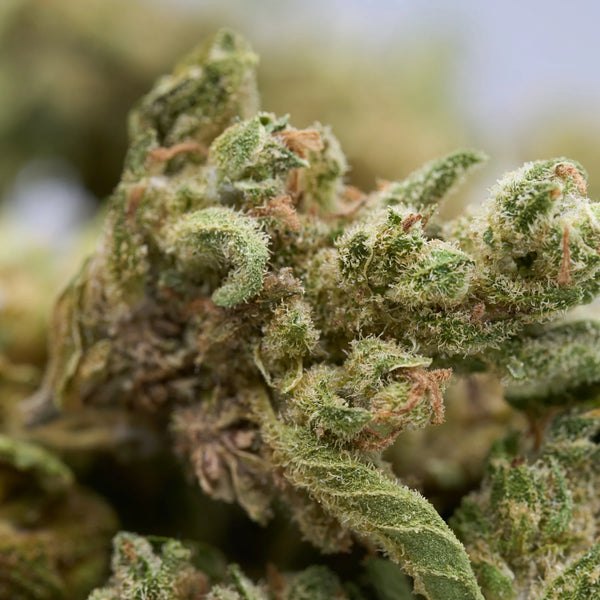
Western States: Pacific Paradise and Diverse Microclimates
Pacific Northwest Region (Washington, Oregon)
The Pacific Northwest represents premium hemp-growing territory, combining moderate temperatures, adequate rainfall, and experienced agricultural communities. Oregon and Washington have become epicenters of American hemp production, producing some of the nation's highest-quality flowers.
Planting Timeline: May through June
Harvest Timeline: October
Rainfall Challenges:
The Pacific Northwest's maritime climate brings abundant rainfall, particularly during fall months. October precipitation creates the region's primary cultivation challenge—balancing the need for full plant maturation against increasing rain-related risks:
- Bud rot (Botrytis): Dense flowers exposed to rain and high humidity are susceptible
- Powdery mildew: Cool, damp conditions favor fungal growth
- Harvest delays: Wet flowers cannot be harvested; waiting for dry weather can push harvest into November
Mold Prevention Strategies:
Pacific Northwest growers employ comprehensive mold prevention programs:
- Variety selection: Open flower structures that shed water and allow airflow
- Plant spacing: Wider spacing (6-8 feet) improves air circulation
- Selective defoliation: Removing lower foliage enhances airflow through the canopy
- Covered cultivation: Hoop houses or greenhouses eliminate direct rain exposure
- Rapid harvest and drying: Infrastructure for quick processing when weather windows open
THCa Preservation in Wet Conditions:
The Pacific Northwest's cool fall temperatures (55-65°F during October) create ideal conditions for cold weather THCa hemp maturation. Despite rainfall challenges, the region's moderate temperatures slow THCa degradation climate processes, allowing flowers to maintain potency during the critical final maturation period.
Regional THCa Testing Requirements:
- Oregon: Well-established testing protocols; 15-day harvest window after testing; 0.3% total THC limit
- Washington: Similar protocols to Oregon; robust laboratory infrastructure
Oregon's leadership in hemp cultivation has produced some of the finest THCa hemp available. Explore Oregon-grown premium THCa flowers that showcase the region's exceptional growing conditions and expertise.
California: Diverse Climates, Diverse Opportunities
California's vast geography encompasses nearly every climate type, creating dramatically different hemp harvest time by state calendars within a single state. From cool coastal zones to Central Valley heat to southern California's Mediterranean climate, California offers unmatched cultivation diversity.
Northern California:
Planting: May Harvest: September-October
Northern California, particularly the famous Emerald Triangle (Humboldt, Mendocino, Trinity counties), offers ideal hemp cultivation conditions. Morning fog, afternoon sun, and moderate temperatures create premium growing environments. The region's cannabis cultivation expertise translates directly to hemp production, with growers expertly managing state hemp THCa regulations and producing exceptional quality flowers.
Central Valley California:
Planting: April-May Harvest: September-October
California's Central Valley combines agricultural infrastructure, irrigation availability, and intense sunlight. Summer temperatures regularly exceed 100°F, requiring heat management strategies similar to the Southwest. However, the valley's rich soils and agricultural expertise support large-scale cultivation operations.
Southern California:
Planting: March-April Harvest: September
Southern California's Mediterranean climate and early spring warming allow the earliest planting dates. Coastal regions benefit from marine layer cooling, while inland areas experience desert-like heat. Water availability is the primary limiting factor, but successful operations produce exceptional quality.
Microclimates and THCa Variation:
California's microclimate diversity creates corresponding climate effects on THCa variation. Coastal growers benefit from cool, humid conditions that slow cannabinoid degradation, while inland growers manage heat stress that can rapidly increase THCa levels. This diversity allows California growers to:
- Target specific cannabinoid profiles by selecting appropriate growing locations
- Extend harvest seasons by cultivating in multiple climate zones
- Produce diverse product lines showcasing different terroir characteristics
State Regulations:
California's hemp program operates under complex regulations that intersect with the state's cannabis framework. THCa limits by state hemp regulations in California require careful attention, as the state distinguishes between "total THC" and "Delta-9 THC" in ways that affect compliance testing.
Special Considerations by Region
Cold Climate Strategies for Northern Growers
Northern cultivators working with cold weather THCa hemp must employ specialized strategies to maximize their short growing seasons while maintaining quality and compliance.
Selecting Cold-Hardy Genetics:
Variety selection is paramount in northern regions. Successful cultivators choose:
- Fast-finishing varieties: 90-110 day maturation periods
- Frost-tolerant genetics: Varieties that can withstand light frosts (28-32°F)
- Photoperiod-appropriate selections: Cultivars that flower under northern photoperiods (14-hour critical day length)
Greenhouse Supplementation:
Many northern growers use season extension strategies:
- Spring starts: Beginning plants in greenhouses 2-4 weeks before outdoor transplanting
- Fall protection: Hoop houses or cold frames protect ripening flowers from early frosts
- Full-season greenhouses: Climate-controlled environments eliminate frost concerns entirely
THCa Stability in Cold Snaps:
Cold weather THCa hemp research shows that brief cold exposure (above freezing) may actually benefit final flower quality by:
- Slowing metabolism: Cooler temperatures reduce THCa conversion to Delta-9 THC
- Enhancing terpene preservation: Cold temperatures prevent volatile terpene loss
- Triggering stress responses: Mild cold stress may increase cannabinoid production
However, hard freezes (below 28°F) damage plant tissue and should be avoided through timely harvest.
Hot Climate Strategies for Southern Growers
Managing heat stress THCa levels is critical for southern growers facing extended periods of extreme heat.
Heat-Tolerant Varieties:
Not all hemp genetics tolerate heat equally. Successful warm-climate cultivators select:
- Sativa-dominant genetics: Generally more heat-tolerant than indica varieties
- Desert-adapted strains: Varieties bred in hot climates show superior heat tolerance
- Large leaf varieties: More leaf surface area supports evaporative cooling
Shade Management:
Strategic shade implementation protects plants during peak heat:
- 30-40% shade cloth: Reduces heat stress while maintaining adequate light for growth
- Living shade: Intercropping with taller plants provides afternoon shade
- Reflective mulches: White or silver mulches reduce soil temperature and reflected heat
THCa Degradation Prevention:
Heat stress THCa levels increase as plants respond to environmental challenges, but extreme heat can also trigger degradation. Prevention strategies include:
- Consistent irrigation: Maintaining soil moisture reduces heat stress
- Foliar sprays: Water applications during peak heat cool plant tissue
- Harvest timing adjustments: Planning harvest during cooler fall months allows maturation without extreme heat exposure
- Rapid post-harvest processing: Quick drying and curing prevents heat-related THCa degradation
Hurricane-Prone Areas: Special Considerations
Growers in hurricane-prone regions (Atlantic and Gulf coasts) must prepare for tropical storm threats during the critical September-October harvest window.
Early Harvest Strategies:
When hurricane forecasts threaten ripening crops, growers face difficult decisions. Strategies include:
- Selective early harvest: Taking the most mature plants before storm arrival
- Emergency THCa testing: Expedited laboratory testing to verify compliance before forced early harvest
- Partial harvest: Removing top colas while leaving lower branches to mature post-storm
Storm Preparation:
Infrastructure protection and plant management before storms:
- Support structures: Strengthening stakes and trellises prevents plant damage
- Selective defoliation: Reducing leaf surface area decreases wind resistance
- Drainage improvement: Ensuring proper water drainage prevents flooding damage
- Harvest equipment staging: Positioning equipment for rapid post-storm harvest if conditions allow
Emergency THCa Testing:
State hemp THCa regulations may allow emergency testing procedures when hurricanes threaten. Growers should:
- Establish relationships with multiple testing laboratories
- Understand state emergency harvest protocols
- Document weather threats and harvest decisions for regulatory compliance
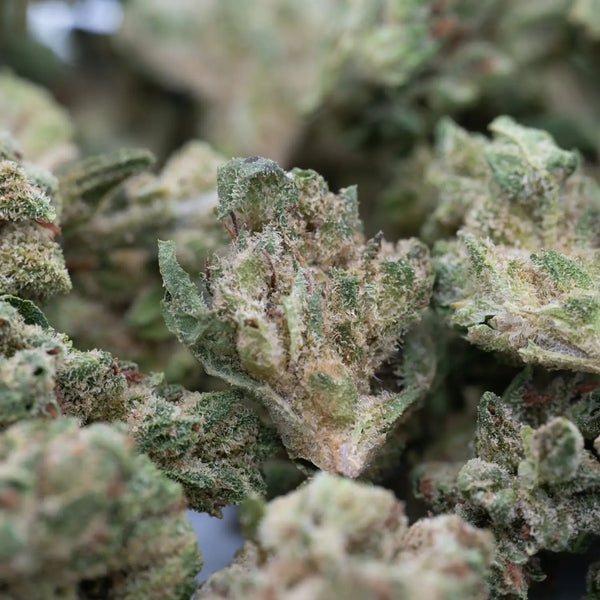
State-Specific THCa Regulations and Testing Requirements
Understanding regional THCa testing requirements is essential for compliance. While federal law sets a 0.3% total THC limit (Delta-9 THC + (THCa × 0.877)), individual states implement varying testing protocols and enforcement mechanisms.
Testing Window Requirements
Most states require pre-harvest testing within a specific window before harvest:
- 15-day window: Oregon, Washington, Kentucky, North Carolina
- 30-day window: Colorado, Montana, some other states
- Variable windows: Some states allow flexibility based on cannabinoid stability testing
The testing window acknowledges that climate effects on THCa can cause rapid cannabinoid changes, particularly in hot weather. Shorter windows provide more accurate compliance verification.
State-Specific THC Limits
While federal law sets 0.3% total THC, some states have implemented alternative standards:
- Vermont and Maine: 1.0% total THC limit (more permissive)
- Most states: 0.3% total THC federal limit
- Some jurisdictions: Additional restrictions on Delta-9 THC independent of total THC
These THCa limits by state hemp variations significantly affect cultivation strategies and variety selection.
Sampling and Testing Protocols
States specify:
- Who collects samples: State inspectors, licensed samplers, or self-sampling with oversight
- Sampling methodology: Colas from upper third of plant, typically multiple plants per lot
- Laboratory requirements: DEA-registered labs, state-approved facilities, or specific testing methods
- Retesting protocols: Procedures when initial tests exceed limits
Compliance and Remediation
State hemp THCa regulations establish consequences for non-compliant crops:
- Negligent violations: Usually first-time violations without evidence of intent; may allow remediation
- Remediation options: Some states allow removal of non-compliant plants or processing into isolate/distillate
- Crop destruction: Required for crops that cannot be remediated or for repeated violations
- License implications: Multiple violations can result in license suspension or revocation
Understanding your state's specific regional hemp THCa compliance requirements before planting prevents costly mistakes. The expertly cultivated THCa hemp available from compliant producers demonstrates how proper regulatory knowledge produces successful crops.
Optimizing Your Regional Harvest Calendar
Successfully navigating hemp harvest time by state requires integrating climate knowledge, regulatory understanding, and practical cultivation skills. Here are key principles for every region:
Start with Accurate Frost Dates
Use local agricultural extension services or weather databases to identify your last spring frost and first fall frost dates. These dates set the absolute boundaries of your outdoor growing season.
Calculate Your Growing Degree Days
Track GDD accumulation from planting through harvest. This data helps predict maturation timing more accurately than calendar dates and allows year-to-year comparison and planning refinement.
Monitor Cannabinoid Development
Begin preliminary cannabinoid testing 4-5 weeks before anticipated harvest, then test weekly as harvest approaches. This monitoring helps you understand how climate effects on THCa manifest in your specific location and variety.
Plan for Weather Variability
Build flexibility into harvest timing. Weather rarely cooperates perfectly—rain delays, heat waves, and early cold snaps all affect harvest schedules. Having extra time built into your calendar reduces stress and improves quality.
Understand Your State's Regulatory Timeline
Know exactly when testing must occur, how long results take to return, and what harvest notification requirements exist. Missing regulatory deadlines can result in crop loss regardless of quality.
Select Varieties for Your Region
Choose genetics proven in your climate zone. While exotic varieties may be tempting, locally-adapted genetics produce more consistent results and easier regional hemp THCa compliance.
Conclusion: Regional Knowledge Drives Hemp Success
Hemp harvest time by state isn't just a matter of looking at a calendar—it's a complex integration of climate science, plant biology, regulatory compliance, and practical farming experience. Whether you're cultivating in Maine's cool maritime climate, Kentucky's humid continental region, Colorado's high-altitude mountain valleys, or California's diverse microclimates, understanding your region's specific conditions is essential for producing compliant, high-quality hemp.
The geographic diversity of American hemp cultivation creates fascinating variety in the marketplace. Consumers benefit from this diversity, accessing hemp flowers that express their terroir—cool-climate varieties with preserved terpenes, desert-grown flowers with intense cannabinoid production, or Pacific Northwest hemp combining optimal growing conditions with expert cultivation.
As the hemp industry matures, regional hemp THCa compliance knowledge becomes increasingly sophisticated. Growers develop location-specific expertise, understanding exactly how their microclimate affects cannabinoid development and how to optimize harvest timing for both quality and compliance. This regional specialization elevates the entire industry, producing distinctive hemp flowers that showcase American agriculture's diversity.
For consumers seeking the finest expressions of regional hemp cultivation, premium THCa hemp flowers from expert growers demonstrate how proper harvest timing, climate-appropriate variety selection, and compliance-focused cultivation create exceptional products.
Whether you're a cultivator planning your growing season or a consumer appreciating the complex factors behind high-quality hemp, understanding regional growing calendars enriches your connection to this remarkable plant. From the first spring planting in southern fields to the last fall harvest in northern greenhouses, American hemp cultivation showcases both agricultural tradition and cutting-edge innovation—a perfect embodiment of hemp's promise as a crop for the future.
Frequently Asked Questions
What is the best state for THCa hemp production?
The best states for THCa hemp production include Oregon, Colorado, Kentucky, North Carolina, and California, each offering distinct advantages. Oregon and Washington provide ideal Pacific Northwest conditions with cool falls that preserve cannabinoids. Kentucky and North Carolina combine long growing seasons with established agricultural infrastructure. Colorado's high-altitude cultivation produces unique cannabinoid profiles through UV exposure and temperature swings.
How does cold weather affect THCa levels in hemp?
Cold weather THCa hemp cultivation generally benefits from cooler temperatures, which slow metabolic processes including THCa conversion to Delta-9 THC. Cool fall weather (50-65°F) during final maturation preserves THCa and enhances terpene retention, often producing superior quality. However, freezing temperatures (below 28°F) damage plant tissue and should be avoided through timely harvest.
Can heat stress increase THCa levels above legal limits?
Yes, heat stress THCa levels can increase as plants respond to environmental challenges by producing more defensive compounds, including cannabinoids. Temperatures consistently above 90°F can accelerate both THCa production and its conversion to Delta-9 THC. Managing heat stress through irrigation, shade, and variety selection helps maintain compliant cannabinoid levels.
What are THCa testing requirements by state?
Regional THCa testing requirements vary significantly. Most states require testing within 15-30 days of harvest, with samples collected from the upper third of plants and analyzed for total THC (Delta-9 + THCa × 0.877). Vermont and Maine allow 1% total THC, while most states enforce the federal 0.3% limit. Specific protocols vary by state—contact your state agricultural department for exact requirements.
How can I find region-specific hemp growing information?
Contact your state's agricultural extension service, which provides localized growing information including frost dates, soil testing, and variety recommendations. State hemp regulatory agencies offer compliance guidance and testing requirements. Regional hemp grower associations provide peer support and shared knowledge about local cultivation practices.
Does climate affect THCa degradation after harvest?
Yes, THCa degradation climate effects continue post-harvest. High temperatures, humidity, and light exposure accelerate THCa degradation and decarboxylation. Proper drying (60°F, 60% humidity) and storage (cool, dark, low humidity) in any climate preserve THCa. Growers in hot, humid regions must be particularly vigilant about post-harvest handling to maintain product quality and stability.
This comprehensive guide to regional hemp harvest timing and THCa compliance helps cultivators and consumers understand the complex interplay between geography, climate, and cannabinoid production. For expertly cultivated hemp that showcases optimal regional growing practices, explore premium THCa releases from America's finest hemp-producing regions.

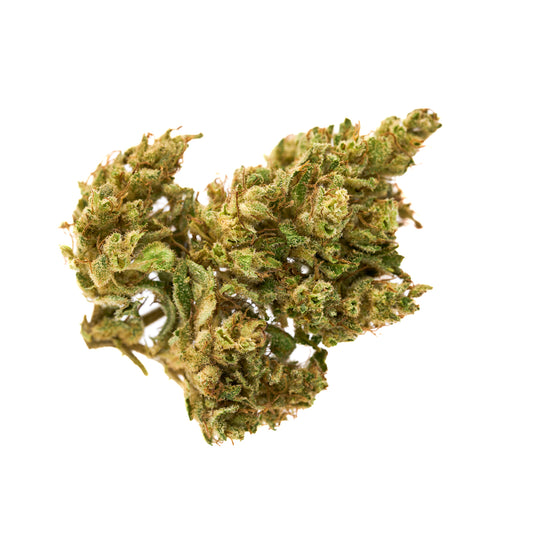
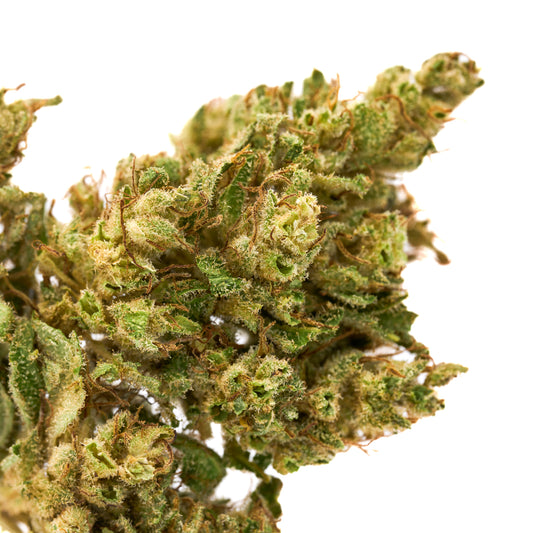
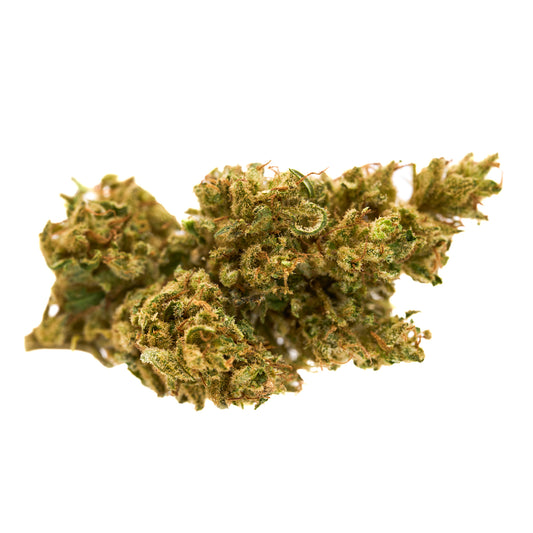
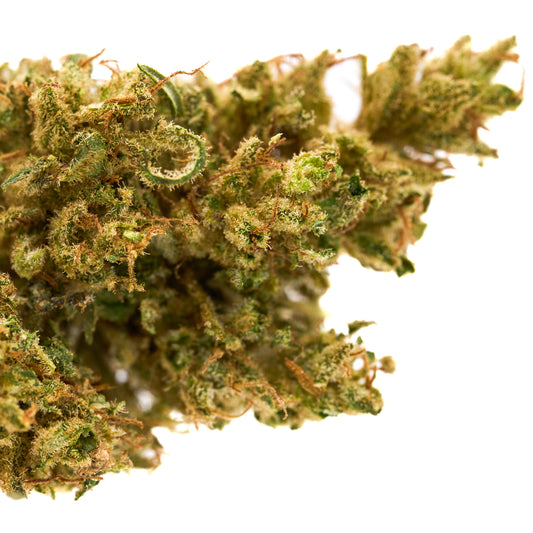
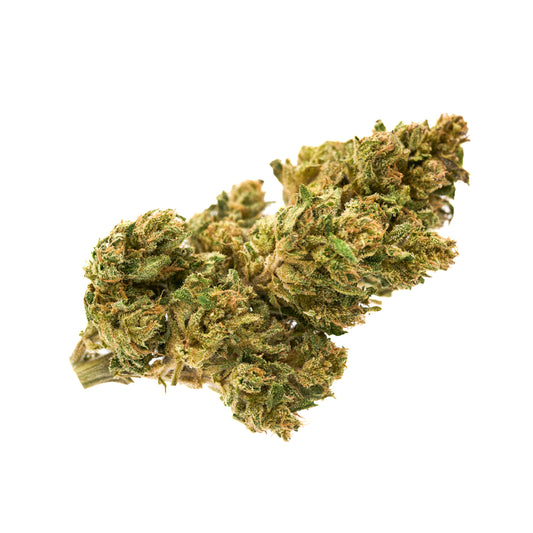
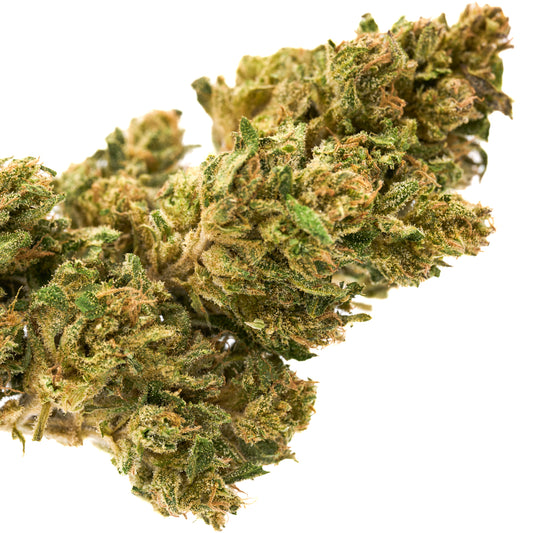



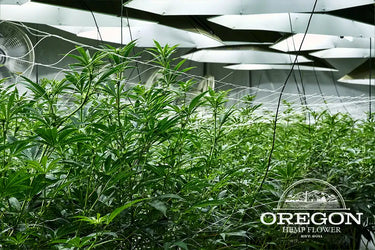

Leave a comment
Please note, comments need to be approved before they are published.